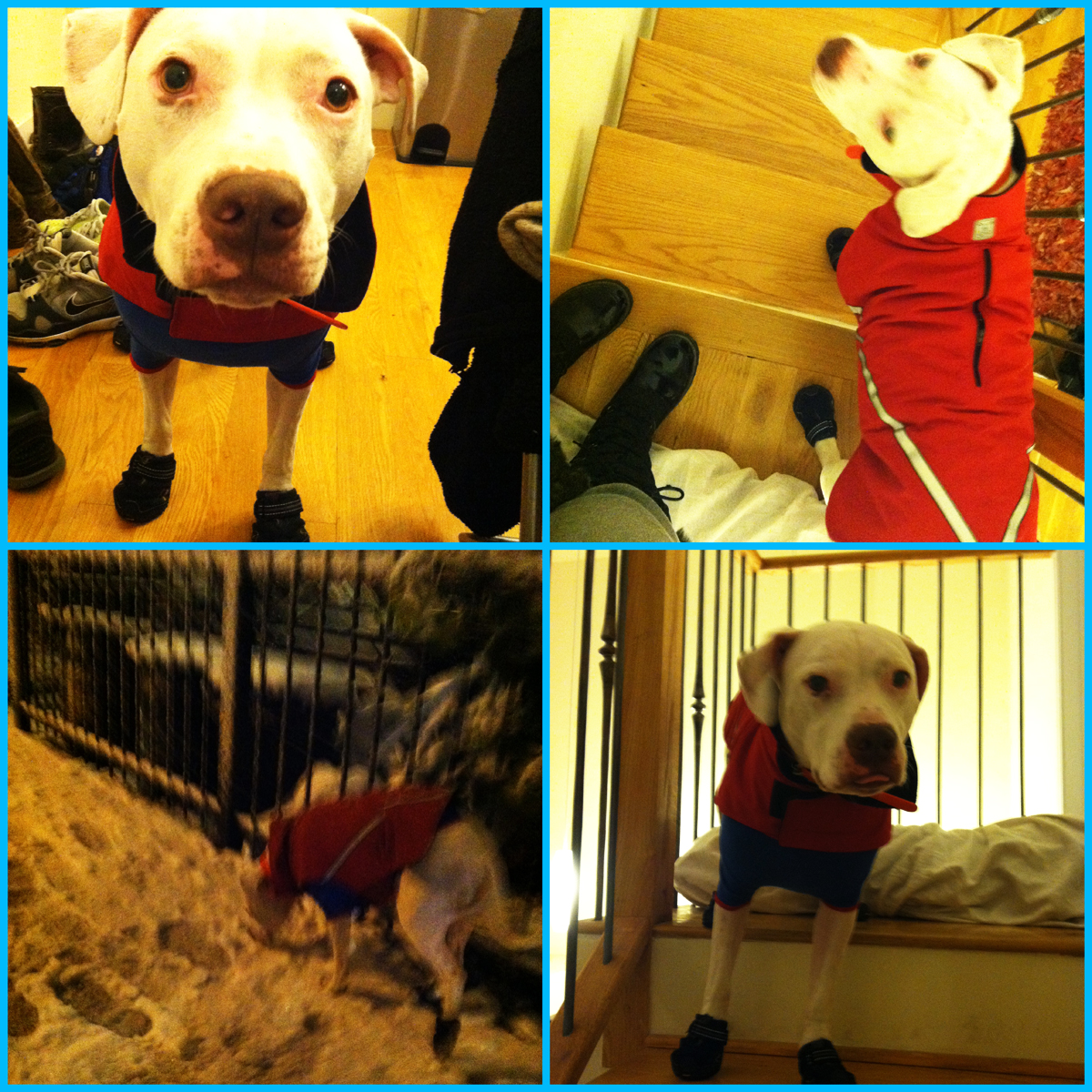Car Safety with @Chevrolet @NYAutoShow
To celebrate National Pet Day today, Chevy invited dogs to take over the New York Auto Show for a special car safety demonstration hosted by Pet Lifestyle Expert Charlotte Reed… Jacob loves car rides!

When thinking about buying a car, consider the needs of the family pet. When shopping for a vehicle, review pet-friendly vehicle features and recognize that safety is of top importance for you, your pet and your passengers.
1. Give your dealer the deal! Tell your salesperson about your dog and inquire about pet-friendly features of the vehicles you’re shopping. Discuss: available interior space so that your dog can fit comfortably on the seat or in a crate; easy to clean upholstery and flooring options; tinted windows to keep pets cool and to protect them from harmful UV rays; climate control and rear ventilation; safety windows and locks; hooks and belts to secure pet restraint systems; locations of windows and cup holders; and, easy vehicle entry and exit.
2. Give enough consideration to safety features. According to the 2011 AAA/Kurgo study, three out of 10 pet owners admit to being distracted while driving. One in five admits to driving with a pet in their lap. Look for vehicles with enhanced technology features such as lane-departure warning systems, stability and traction control and forward-collision alerts that can help heighten driver alertness to possible danger.
3. Exterior and interior features are important. Look for vehicles that are wide, tall and slightly square at the back. This will make it easier to get pets and pet carriers into and out of vehicles. Cargo room and additional cup holders are useful to stow pet food, water and accessories.
4. In-vehicle technology like power lift-gates that make it easier to let pets in and out of the vehicle.Fold-down seats offer more space for transporting pets and crates. Additional safety and security technology such as remote unlock, vehicle location and crash-detection services helps during pet-emergency situations.
5. Fuel efficiency is good for both your pet and the environment. Gas-saving vehicles can save money, leaving more to spend for pet treats and toys.
6. Consider auto insurance that covers pets. In the event of a crash, some insurance carriers will pay out a lump sum if your pet is killed or injured in a crash.
7. No matter how much you want your pet to ride shotgun, do not allow them to ride in the front seat or hang their head out the window. Pets riding in the front seat can be thrown into and through the windshield. Additionally, air bags can launch out of the dashboard at a great enough force to severely injure a pet. Lastly, a dog with his head hanging out of window can be injured with debris or litter hitting his head or flying in his eye. Pet owners can use crates, safety harnesses, and pet barriers to secure their pets when traveling by car.
8. Get your pet some ID. Make sure your pet has proper identification. Just in case he or she gets lost while traveling, you want to be sure your pet is wearing up-to-date ID tags with an emergency contact phone number.
9. Pack necessary supplies when traveling by car. Make sure you have and know how to use a first aid kit for pets in the car. Also, carry bottled water for thirsty pets and to avoid stomach upset. Don’t forget a blanket or a towel if you need to transport your pet or have to deal with shock.
10. Before departing your vehicle have things organized before opening the car doors. Make sure your pet is still secured. Additionally, when taking your pet out of the car, have a leash attached and in your hand so that your pet cannot escape.



